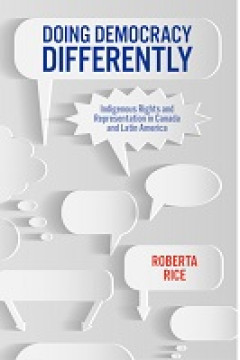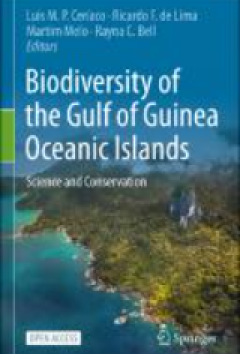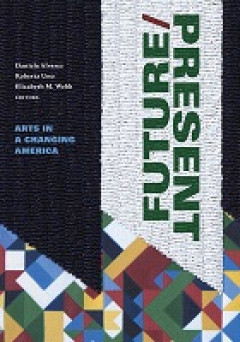Ditapis dengan
E-book The Land Is Our Community : Aldo Leopold’s Environmental Ethic for t…
his is a book about Aldo Leopold’s land ethic,1 a view he developed over the course of his lifetime, a view that was informed by his experiences as a hunter, forester, wildlife manager, ecologist, con-servationist, and professor. It culminated in the essay “The Land Ethic” in A Sand County Almanac, published posthumously after his untimely death at age sixty-one in 1948. It has been extre…
- Edisi
- -
- ISBN/ISSN
- 9780226834474
- Deskripsi Fisik
- 198 hlm
- Judul Seri
- -
- No. Panggil
- 155.9 MIL t

E-book Doing Democracy Differently: Indigenous Rights and Representation in C…
Across North and South America, Indigenous people play a dual political role, building self-governing structures in their own nations and participating in the elections of settler states. Doing Democracy Differently asks how states are responding to demands for Indigenous representation and autonomy and in what ways the ongoing project of decolonization may unsettle the practice of democracy. B…
- Edisi
- -
- ISBN/ISSN
- 9781773855646
- Deskripsi Fisik
- 163 halaman
- Judul Seri
- -
- No. Panggil
- 321.8 RIC d

E-book Biodiversity of the Gulf of Guinea Oceanic Islands : Science and Conse…
The Portuguese explorer Francisco Newton was one of thefirst naturalists todedicate almost one decade to the study of the outstanding diversity of the Gulf ofGuinea oceanic islands. The collections he made, in what was largely unexploredterritory for science, allowed the description of dozens of new species and began toreveal intriguing biogeographic patterns. Gazing at the species he was colle…
- Edisi
- -
- ISBN/ISSN
- 9783031061530
- Deskripsi Fisik
- 707 hlm
- Judul Seri
- -
- No. Panggil
- 577 ALM b

E-book Environment Impact on Reproductive Health : A Translational Approach
The new concept of health, developed in the recent years, considers the person’s well-being more heterogeneously. A new model that considers the relationship between human health and the environment has strongly emerged during the last three decades. Our state of well-being is continually threatened by a series of internal and external disturbin…
- Edisi
- -
- ISBN/ISSN
- 9783031364945
- Deskripsi Fisik
- 242 hlm
- Judul Seri
- -
- No. Panggil
- 612.6 CAS e

E-book FUTURE/PRESENT: Arts in a Changing America
Building on five years of national organizing by Arts in a Changing America, an artist-led initiative that challenges structural racism in the art world, FUTURE/PRESENT includes a range of poetry, essays and criticism, visual and performance art, artist manifestos, interviews, and reflections on community practice.
- Edisi
- -
- ISBN/ISSN
- 9781478025160
- Deskripsi Fisik
- 569 halaman
- Judul Seri
- -
- No. Panggil
- 807 ALV f
E-book Tree Book: learning to recognize frees of British Columbia
The first few pages of the Tree Book give you some tips on how to identify trees. Once you are familiar with the identifying features, turn to the identillcation keys and narrow your choices. To help you locate trees in the book, the colour used in the key for grouping trees with sinlilar features is the same as the coloured background in the upper right corner of the second page for each tree …
- Edisi
- 2nd ed.
- ISBN/ISSN
- 0772621594
- Deskripsi Fisik
- 196 hlm
- Judul Seri
- -
- No. Panggil
- 635.977 PAR t

Computer security
- Edisi
- 1th edition
- ISBN/ISSN
- 0809456702
- Deskripsi Fisik
- 128 Pgs.; illus. 23,5 x 28 cm
- Judul Seri
- Understanding computers
- No. Panggil
- 005.8 CON c
- Edisi
- 1th edition
- ISBN/ISSN
- 0809456702
- Deskripsi Fisik
- 128 Pgs.; illus. 23,5 x 28 cm
- Judul Seri
- Understanding computers
- No. Panggil
- 005.8 CON c

Artificial intelligence
- Edisi
- 1th edition
- ISBN/ISSN
- 0809456753
- Deskripsi Fisik
- 128 Pgs.; illus. 23,5 x 28 cm
- Judul Seri
- Understanding computer
- No. Panggil
- 006.3 CON a
- Edisi
- 1th edition
- ISBN/ISSN
- 0809456753
- Deskripsi Fisik
- 128 Pgs.; illus. 23,5 x 28 cm
- Judul Seri
- Understanding computer
- No. Panggil
- 006.3 CON a

Computer basics
- Edisi
- 1th edition
- ISBN/ISSN
- 0809456540
- Deskripsi Fisik
- 128 Pgs.; illus. 23,5 x 28 cm
- Judul Seri
- Understanding coputers
- No. Panggil
- 001.64 CON c
- Edisi
- 1th edition
- ISBN/ISSN
- 0809456540
- Deskripsi Fisik
- 128 Pgs.; illus. 23,5 x 28 cm
- Judul Seri
- Understanding coputers
- No. Panggil
- 001.64 CON c

Input/output
- Edisi
- 1th edition
- ISBN/ISSN
- 0809456664
- Deskripsi Fisik
- 128 Pgs.; illus. 23,5 x 28 cm
- Judul Seri
- -
- No. Panggil
- 004 CON i
- Edisi
- 1th edition
- ISBN/ISSN
- 0809456664
- Deskripsi Fisik
- 128 Pgs.; illus. 23,5 x 28 cm
- Judul Seri
- -
- No. Panggil
- 004 CON i

Computer images
- Edisi
- 1th edition
- ISBN/ISSN
- 0809456621
- Deskripsi Fisik
- 128 Pgs.; illus. 23,5 x 28 cm
- Judul Seri
- Understanding computers
- No. Panggil
- 006.6 CON c
- Edisi
- 1th edition
- ISBN/ISSN
- 0809456621
- Deskripsi Fisik
- 128 Pgs.; illus. 23,5 x 28 cm
- Judul Seri
- Understanding computers
- No. Panggil
- 006.6 CON c

Communications
- Edisi
- 1th edition
- ISBN/ISSN
- 0809457008
- Deskripsi Fisik
- 128 Pgs.; illus. 23,5 x 28 cm
- Judul Seri
- Understanding computers
- No. Panggil
- 384.3 CON c
- Edisi
- 1th edition
- ISBN/ISSN
- 0809457008
- Deskripsi Fisik
- 128 Pgs.; illus. 23,5 x 28 cm
- Judul Seri
- Understanding computers
- No. Panggil
- 384.3 CON c
 Karya Umum
Karya Umum  Filsafat
Filsafat  Agama
Agama  Ilmu-ilmu Sosial
Ilmu-ilmu Sosial  Bahasa
Bahasa  Ilmu-ilmu Murni
Ilmu-ilmu Murni  Ilmu-ilmu Terapan
Ilmu-ilmu Terapan  Kesenian, Hiburan, dan Olahraga
Kesenian, Hiburan, dan Olahraga  Kesusastraan
Kesusastraan  Geografi dan Sejarah
Geografi dan Sejarah